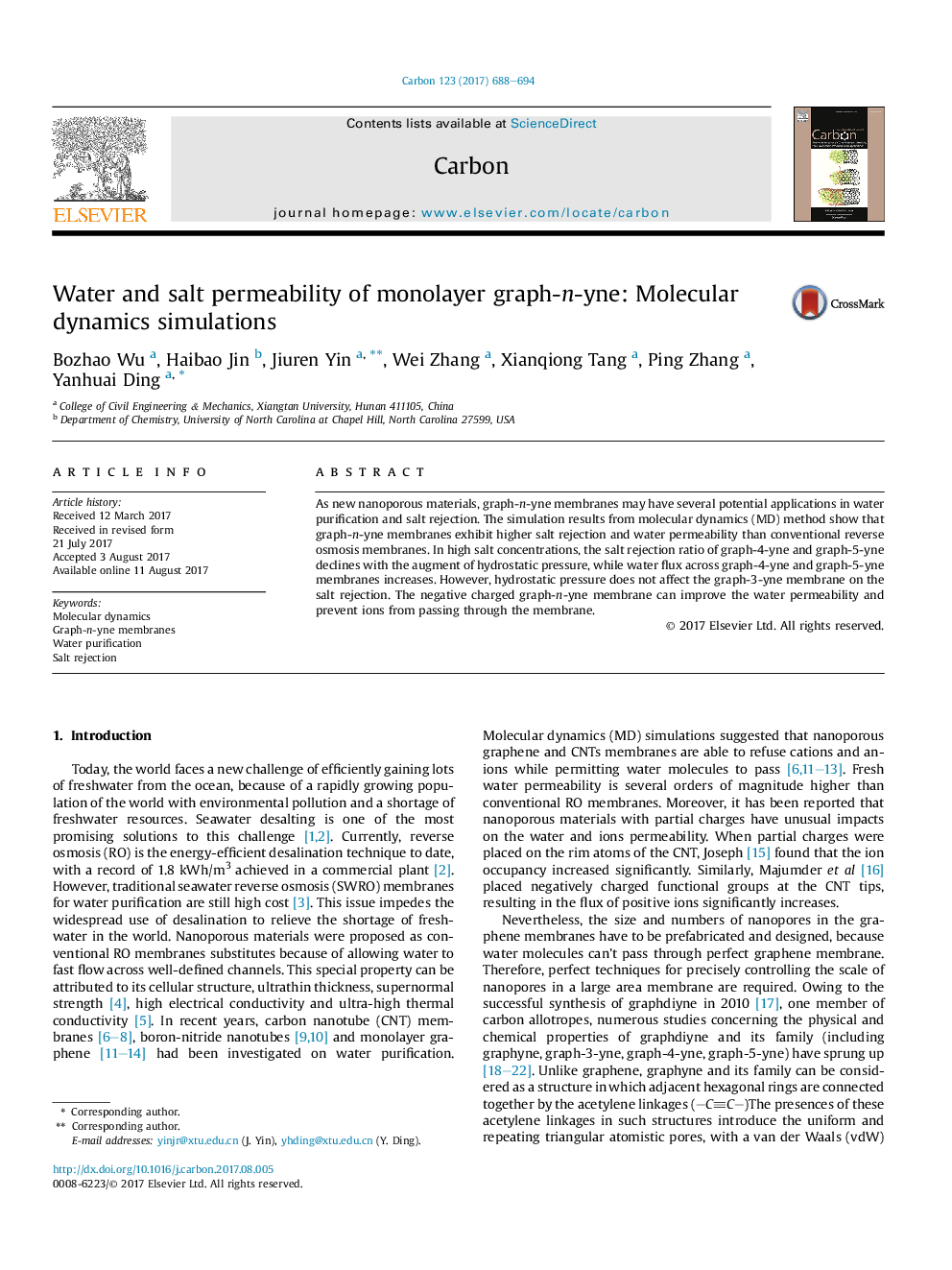| Article ID | Journal | Published Year | Pages | File Type |
|---|---|---|---|---|
| 5431602 | Carbon | 2017 | 7 Pages |
As new nanoporous materials, graph-n-yne membranes may have several potential applications in water purification and salt rejection. The simulation results from molecular dynamics (MD) method show that graph-n-yne membranes exhibit higher salt rejection and water permeability than conventional reverse osmosis membranes. In high salt concentrations, the salt rejection ratio of graph-4-yne and graph-5-yne declines with the augment of hydrostatic pressure, while water flux across graph-4-yne and graph-5-yne membranes increases. However, hydrostatic pressure does not affect the graph-3-yne membrane on the salt rejection. The negative charged graph-n-yne membrane can improve the water permeability and prevent ions from passing through the membrane.
Graphical abstractThe simulation results from molecular dynamics method show that graph-n-yne membranes exhibit higher salt rejection and water permeability than conventional reverse osmosis membranes.Download high-res image (453KB)Download full-size image
